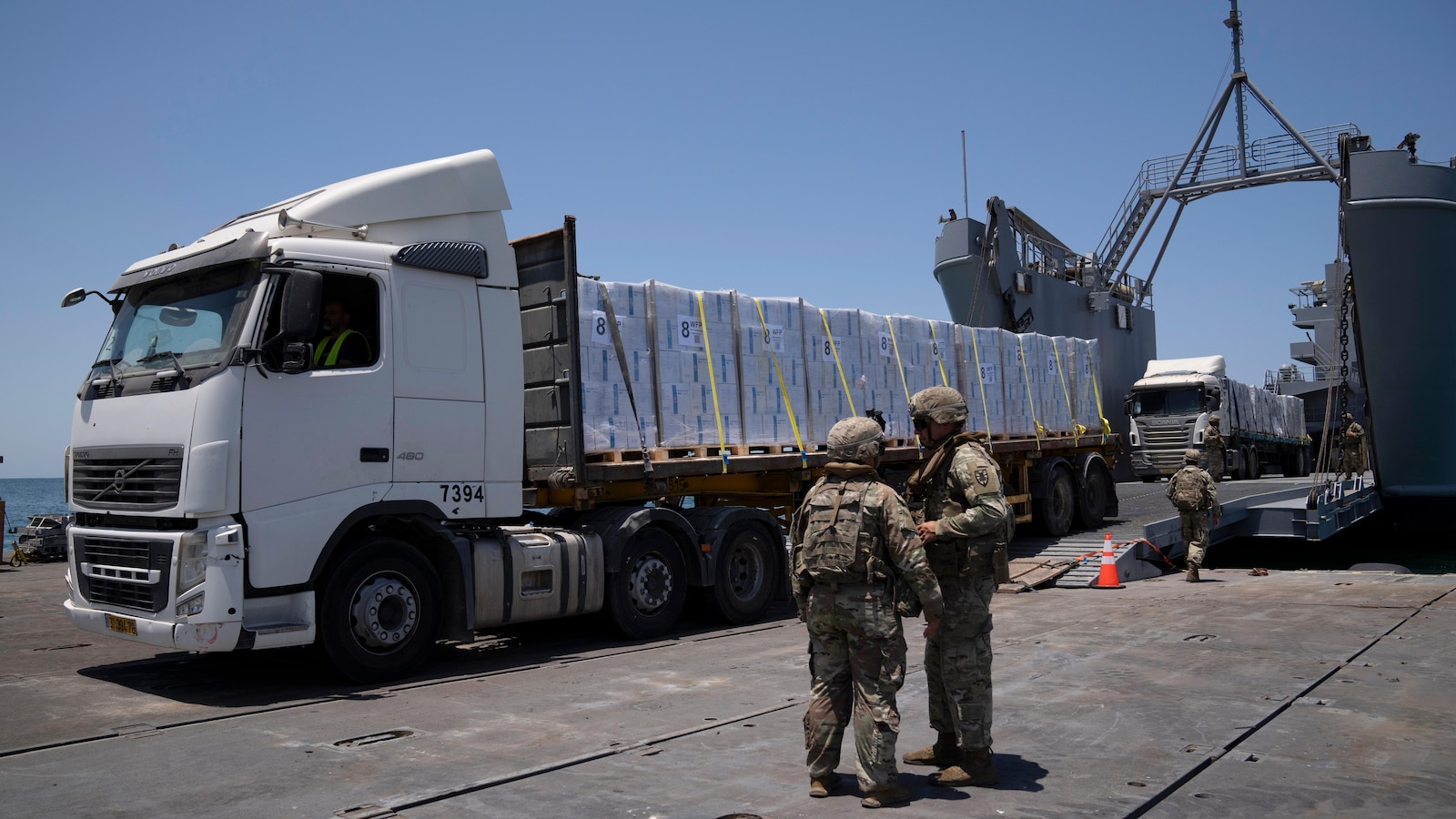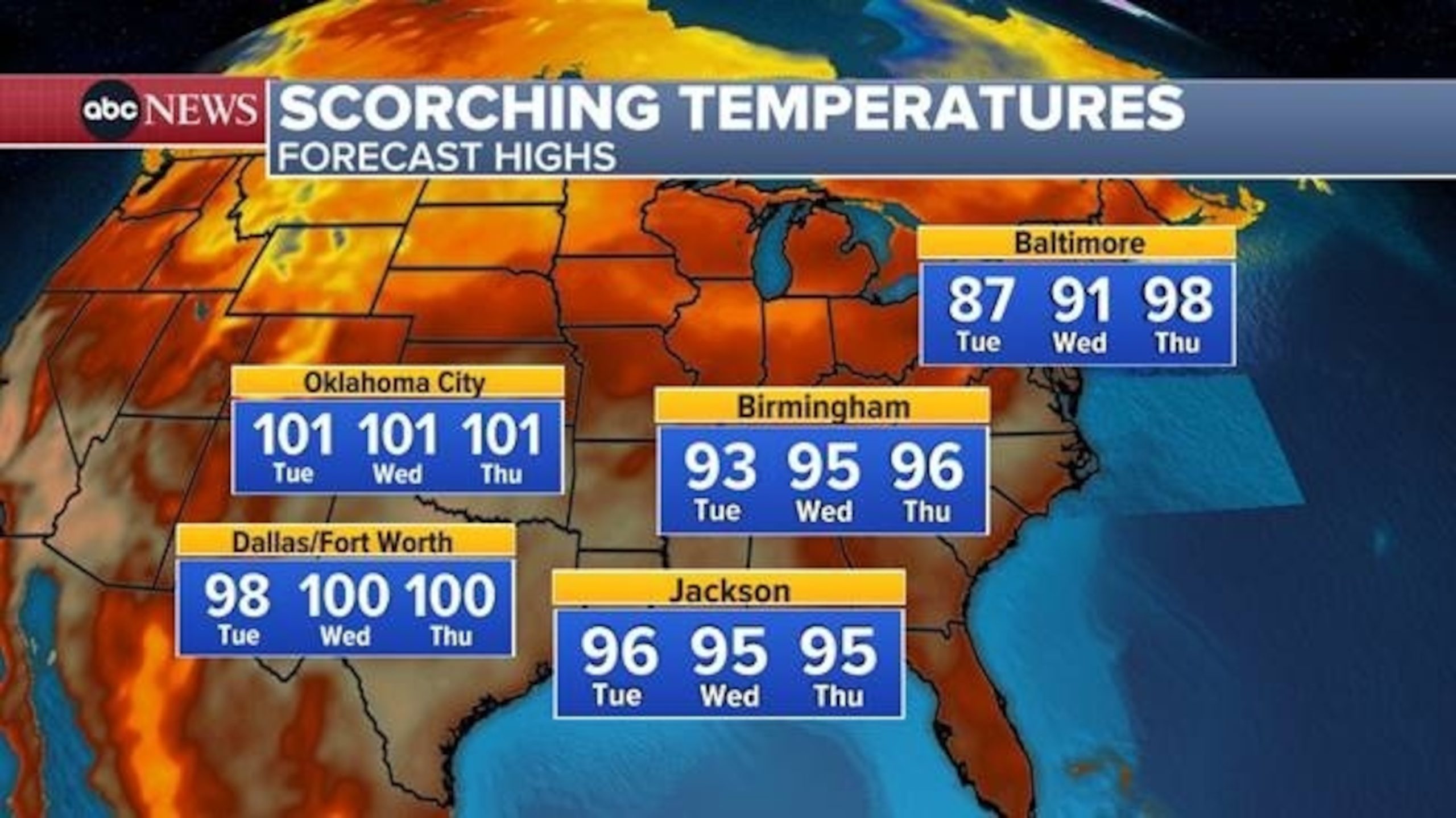
WASHINGTON — The pier built by the U.S. military to bring aid to Gaza has been removed due to weather to protect it, and the U.S. is considering not re-installing it unless the aid begins flowing out into the population again, U.S. officials said Friday.
While the military has helped deliver desperately needed food through the pier, the vast majority of it is still sitting in the adjacent storage yard and that area is almost full. Aid agencies have had difficulty moving the food to areas further into Gaza where it is most needed because the humanitarian convoys have come under attack.
The U.N., which has the widest reach in delivering aid to starving Palestinians, hasn’t been distributing food and other emergency supplies arriving through the pier since June 9. The pause came after the Israeli military used an area near the pier to fly out hostages after their rescue in a raid that killed more than 270 Palestinians, prompting a U.N. security review over concerns that aid workers’ safety and neutrality may have compromised.
U.N. World Food Program spokesman Steve Taravella said Friday that the U.N. participation in the pier project is still on pause pending resolution of the security concerns.
While always meant to be temporary and never touted as a complete solution to the problems getting humanitarian aid into Gaza, President Joe Biden’s $230 million project has faced a series of setbacks since aid first rolled ashore May 17 and has been criticized by relief groups and congressional Republicans as a costly distraction.
The pier has been used to get more than 19.4 million pounds, or 8.6 million kilograms, of food into Gaza, but has been stymied not only by aid pauses but unpredictable weather. Rough seas damaged the pier just days into its initial operations, forcing the military to remove it temporarily for repairs and then reinstall it. Heavy seas on Friday forced the military to remove it again and take it to the Israeli port at Ashdod.
Several U.S. officials, speaking on condition of anonymity to discuss military movements, said the military could reinstall the pier once the bad weather passes in the coming days, but the final decision on whether to reinstall it hasn’t been made.
Sabrina Singh, a Pentagon spokeswoman, acknowledged that she doesn’t know when the pier will be reinstalled. “When the commander decides that it is the right time to reinstall that pier, we’ll keep you updated on that.,” she said.
She also said Friday that there is a need for more aid to come into Cyprus and be transported to the pier. She noted that the secure area onshore is “pretty close to full,” but that the intention is still to get aid into Gaza by all means necessary. She said the U.S. is having discussions with the aid agencies about the distribution of the food.
But, she added, “Of course, if there’s not enough room in the marshalling yard, then it doesn’t make sense to put our men or women out there when there’s nothing to do.”
Palestinians are facing widespread hunger because fighting in the nearly nine-month Israel-Hamas war, Israeli restrictions on border crossings that are far more productive than the sea route and the attacks on the aid convoys have severely limited the flow of food, medicine and other supplies.
—-
Ellen Knickmeyer contributed from Washington.
Officials have announced that the US aid pier in Gaza has been removed due to adverse weather conditions and uncertainty surrounding the future of a replacement structure. The pier, which was used to facilitate the delivery of humanitarian aid to the Palestinian territory, was deemed unsafe and no longer viable for use.
The decision to remove the pier comes as a blow to the residents of Gaza, who rely heavily on aid from international organizations to meet their basic needs. The pier served as a crucial lifeline for the delivery of food, medicine, and other essential supplies to the besieged territory, which has been under a strict Israeli blockade for over a decade.
According to officials, the deteriorating condition of the pier made it unsafe for use, posing a risk to both aid workers and recipients. In addition, the uncertain future of a replacement structure has further complicated the situation, leaving many wondering how aid will continue to reach those in need in Gaza.
The removal of the aid pier highlights the ongoing challenges faced by humanitarian organizations operating in Gaza. The territory has been plagued by conflict, poverty, and a lack of basic services, making it one of the most vulnerable populations in the world. The closure of the aid pier only exacerbates these challenges, leaving many wondering how aid will continue to reach those in need.
Despite the setback, officials remain committed to finding alternative solutions to ensure that aid continues to reach Gaza. Efforts are underway to explore other means of delivering humanitarian assistance, including through land crossings and alternative transportation methods. However, the removal of the aid pier serves as a stark reminder of the fragile nature of humanitarian operations in Gaza and the urgent need for sustainable solutions to address the ongoing crisis.
In the meantime, residents of Gaza are left to grapple with the uncertainty of how they will receive much-needed aid in the absence of the pier. As international organizations work to find alternative solutions, it is clear that the situation in Gaza remains dire and in need of urgent attention from the international community. Only through continued support and collaboration can we ensure that aid reaches those who need it most in Gaza.


